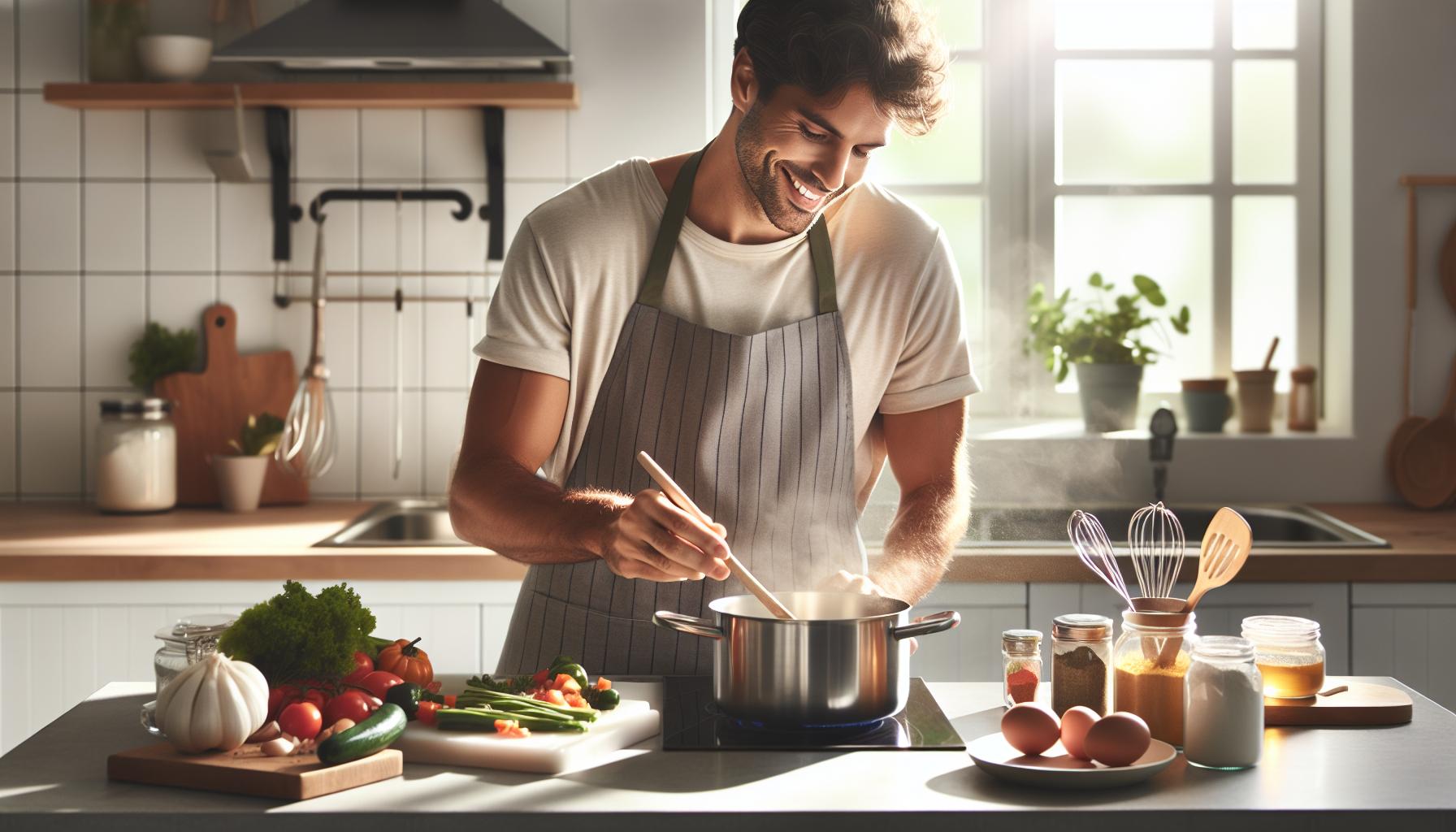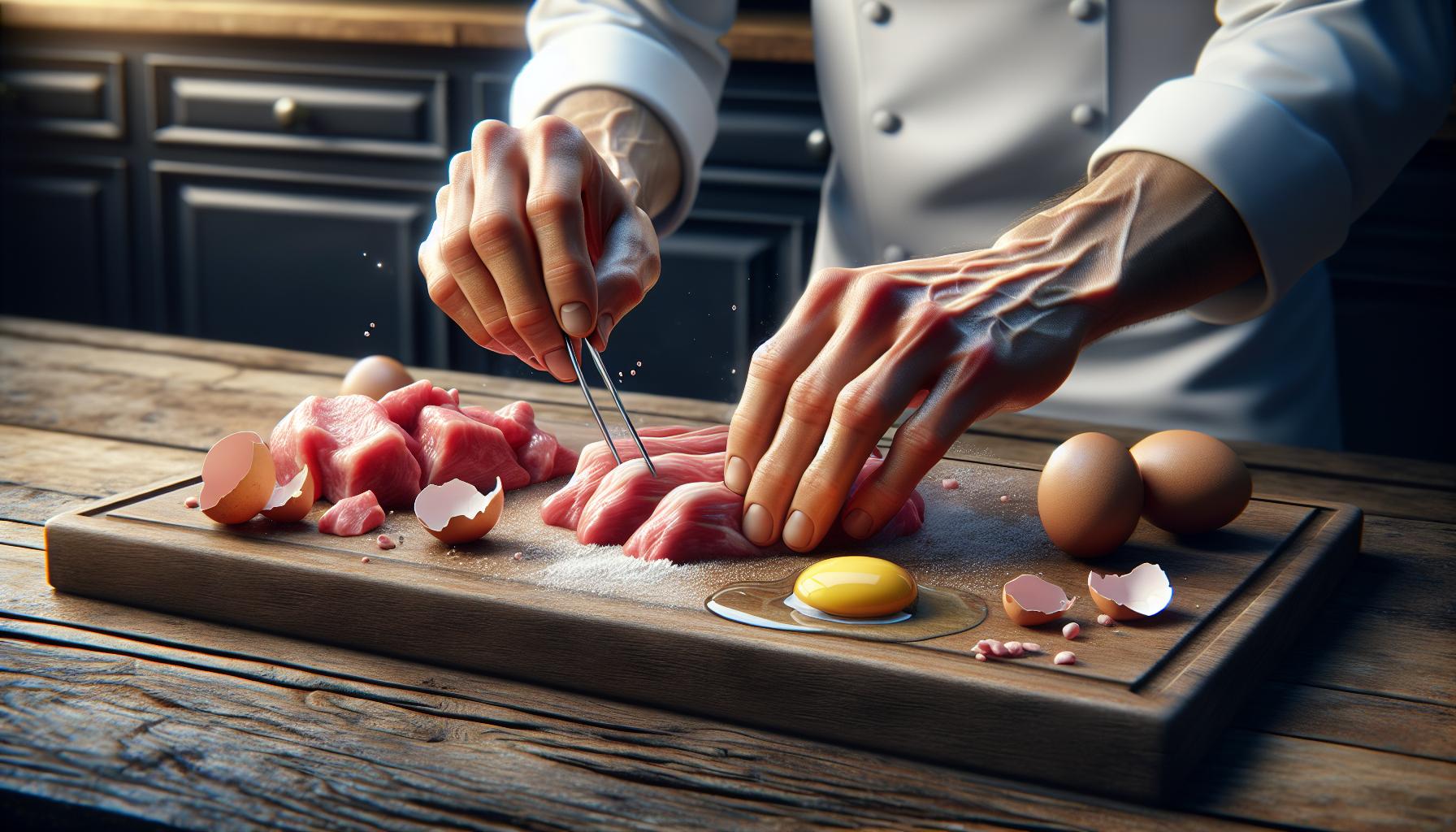
Ever wondered why bread rises, sauces thicken, or meat turns brown? It’s not kitchen magic – it’s food science in action! Understanding the basic principles behind cooking and baking can transform anyone from a recipe follower into a culinary virtuoso.
From protein denaturation to Maillard reactions these scientific concepts might sound complicated but they’re actually happening in kitchens everywhere. When water boils at 212°F (100°C) or when sugar caramelizes to create that perfect golden-brown color it’s all chemistry and physics working together to create delicious results. Whether someone’s whipping up a simple weeknight dinner or crafting an elaborate dessert knowing the “why” behind cooking techniques can help prevent kitchen disasters and elevate their culinary game to new heights.
How The Basic Principles Of Food Science Apply To Cooking and Baking Techniques
Food science principles transform raw ingredients into cooked dishes through precise chemical reactions and heat transfer methods. These fundamental processes create predictable changes in texture, flavor and nutritional content.
Chemical Reactions in Cooking
Chemical reactions alter food structure at the molecular level during cooking. The Maillard reaction occurs when proteins and sugars interact at temperatures between 280°F-330°F, creating browned surfaces with complex flavors on foods like seared steaks and crusty breads. Protein denaturation changes the molecular structure of proteins at specific temperature ranges – eggs solidify at 144°F-158°F while meat proteins begin changing at 120°F. Caramelization breaks down sugars at temperatures above 320°F, producing sweet brown compounds and distinct flavors in dishes like crème brûlée and caramel sauce.
Role of Heat Transfer Methods
Heat moves through food via three primary mechanisms – conduction, convection and radiation. Conduction transfers heat through direct contact, like a steak on a hot pan or potatoes in boiling water. Convection circulates heat through liquids or gases, creating even temperatures in ovens and sous vide cooking. Radiation transmits heat through electromagnetic waves, as seen in microwave ovens and broiling. Each method affects cooking speed and results differently – convection browns food 25% faster than conventional ovens while conduction creates direct surface browning through the Maillard reaction.
Protein Structures and Their Cooking Applications

Proteins transform through denaturation when exposed to heat cooking methods altering their molecular structure. These changes create distinct textures flavors in various protein-rich foods.
Meat and Fish Protein Changes
Heat exposure triggers protein denaturation in meat muscle fibers at specific temperature ranges. At 120°F (49°C), myosin proteins begin to contract shrinking muscle fibers. Collagen proteins convert to gelatin between 160-180°F (71-82°C), creating tender textures in tough cuts. Fish proteins denature at lower temperatures:
| Protein Type | Denaturation Temperature | Effect |
|---|---|---|
| Myosin | 120-140°F (49-60°C) | Muscle contraction |
| Collagen | 160-180°F (71-82°C) | Gelatin conversion |
| Fish protein | 110-140°F (43-60°C) | Flaking texture |
Egg-Based Reactions
Egg proteins undergo precise structural changes at different temperatures affecting their final texture. The white proteins coagulate at 144-149°F (62-65°C) forming an opaque gel structure. Yolk proteins set at higher temperatures around 158°F (70°C):
| Egg Component | Setting Temperature | Texture Result |
|---|---|---|
| Egg whites | 144-149°F (62-65°C) | Firm white gel |
| Egg yolks | 158°F (70°C) | Creamy solid |
| Whole eggs | 144-158°F (62-70°C) | Custard set |
These temperature-dependent changes enable the creation of diverse egg dishes from soft scrambled eggs to firm boiled eggs.
Carbohydrates and Sugar Chemistry

Carbohydrates perform essential functions in cooking through molecular transformations at specific temperatures. These transformations create distinct textures in starches while influencing the behavior of sugars in baking applications.
Gelatinization in Cooking
Starch molecules undergo gelatinization when exposed to heat and moisture at temperatures between 140-158°F (60-70°C). The process occurs as starch granules absorb water, swell to multiple times their original size and release amylose molecules. This molecular change creates thick, smooth textures in dishes like gravies, puddings and cream-based sauces. Rice demonstrates gelatinization during cooking as water penetrates the grains at 185°F (85°C), transforming hard, opaque kernels into soft, translucent grains.
Sugar Crystallization in Baking
Sugar crystallization follows precise temperature ranges that determine texture and appearance in confections. Granulated sugar melts at 320°F (160°C) and forms different crystal structures based on temperature manipulation:
| Temperature °F | Temperature °C | Sugar Stage | Common Uses |
|---|---|---|---|
| 235-240 | 113-116 | Soft Ball | Fudge, Fondant |
| 250-265 | 121-129 | Hard Ball | Marshmallows |
| 300-310 | 149-154 | Hard Crack | Toffee, Brittles |
Crystal size impacts texture, with rapid cooling producing fine crystals for smooth candies and slow cooling creating larger crystals for grainy textures.
The Science of Fats and Oils

Fats and oils serve as essential components in cooking and baking, acting as heat conductors, flavor enhancers, and texture modifiers. Understanding their molecular behavior enables precise control over cooking outcomes and improved dish quality.
Emulsification Processes
Emulsification involves combining two immiscible liquids by suspending tiny droplets of one liquid within another. The process creates stable mixtures like mayonnaise, where oil droplets disperse throughout water-based ingredients with the help of emulsifiers such as egg yolks or mustard. Common culinary emulsions include:
- Vinaigrettes combine oil with acidic liquids using stabilizers like mustard or honey
- Hollandaise sauce incorporates melted butter into egg yolks through constant agitation
- Aioli maintains stability through the natural emulsifying properties of garlic
- Commercial emulsifiers like lecithin create shelf-stable products
Temperature Effects on Fats
Different fats exhibit unique melting points and smoking points that determine their cooking applications. Butter melts at 90-95°F and develops a smoke point at 350°F, making it ideal for moderate-heat cooking. Here’s how temperature affects common cooking fats:
| Fat Type | Melting Point (°F) | Smoke Point (°F) |
|---|---|---|
| Coconut Oil | 76 | 350 |
| Olive Oil | 20 | 375 |
| Lard | 95 | 370 |
| Vegetable Oil | 50 | 400-450 |
The smoke point indicates when fats break down and release harmful compounds, affecting both flavor and nutritional value. Higher smoke points enable high-temperature cooking methods like deep frying or searing.
Leavening Agents and Chemical Reactions
Leavening agents create the rise in baked goods through gas-producing chemical reactions. These reactions transform dense batters into light airy products by incorporating air bubbles that expand during baking.
Biological Leaveners
Yeast serves as the primary biological leavening agent in bread making through fermentation. Active yeast cells consume sugars in dough mixtures producing carbon dioxide gas at temperatures between 75-85°F (24-29°C). The gluten network in bread dough traps these gas bubbles creating the characteristic holes in bread known as alveoli. Sourdough starters contain wild yeast strains plus lactic acid bacteria which produce additional flavors through fermentation. Fresh yeast remains viable for 2 weeks when refrigerated while dried yeast lasts 6 months in an airtight container.
Chemical Leaveners
Chemical leaveners produce carbon dioxide through acid-base reactions without requiring fermentation time. Baking soda (sodium bicarbonate) reacts with acidic ingredients like buttermilk yogurt or vinegar releasing gas bubbles immediately upon mixing. Double-acting baking powder contains two acid salts – one that reacts at room temperature another that activates at baking temperatures above 130°F (54°C). Cream of tartar acts as a stabilizing acid in recipes maintaining consistent gas production. These reactions typically complete within 10-12 minutes of baking producing lighter textures in cakes muffins pancakes.
| Leavening Agent | Reaction Temperature | Active Time |
|---|---|---|
| Active Yeast | 75-85°F (24-29°C) | 1-4 hours |
| Baking Soda | Room temperature | Immediate |
| Double-acting Baking Powder | Room temp + 130°F+ | 10-12 minutes |
Water and Moisture in Food Preparation
Water molecules play a central role in cooking processes by facilitating heat transfer, chemical reactions, and textural changes in foods. The interaction between water and other food components determines the final quality of cooked dishes.
Steam and Vapor Effects
Steam alters food texture through condensation at temperatures between 212°F and 220°F. When water vapor contacts cooler food surfaces, it releases latent heat energy, transferring 970 BTUs per pound of steam condensed. This energy transfer creates distinct cooking effects:
- Steamed vegetables retain more nutrients due to limited water contact
- Bread crusts form when steam escapes at 180°F during baking
- Rice grains soften as steam penetrates starch granules at 185°F
- Dumplings achieve their characteristic texture through steam expansion
- Pressure cookers utilize trapped steam to reach 250°F, reducing cooking time
- Brining adds 10% moisture to meats through osmosis
- Air drying removes surface moisture at 135°F for crispy textures
- Resting meat for 5-10 minutes redistributes 15% of internal moisture
- Double baking techniques reduce moisture content by 25%
- Humidity controls in ovens maintain 35-85% moisture levels
- Salt drawing extracts excess water from vegetables in 30 minutes
- Vacuum sealing preserves natural moisture content for up to 5 days
Fundamental Principles of Food science
The fundamental principles of food science serve as the bedrock of successful cooking and baking. Understanding these scientific concepts empowers home cooks to make informed decisions about temperature control heat transfer and ingredient interactions. This knowledge transforms cooking from a simple recipe-following exercise into an intuitive craft where adjustments can be made with confidence.
Armed with this scientific understanding chefs and home cooks alike can create more consistent results predict outcomes and troubleshoot problems effectively. The intersection of chemistry physics and culinary arts continues to revolutionize how we approach food preparation making cooking both a science and an art.


